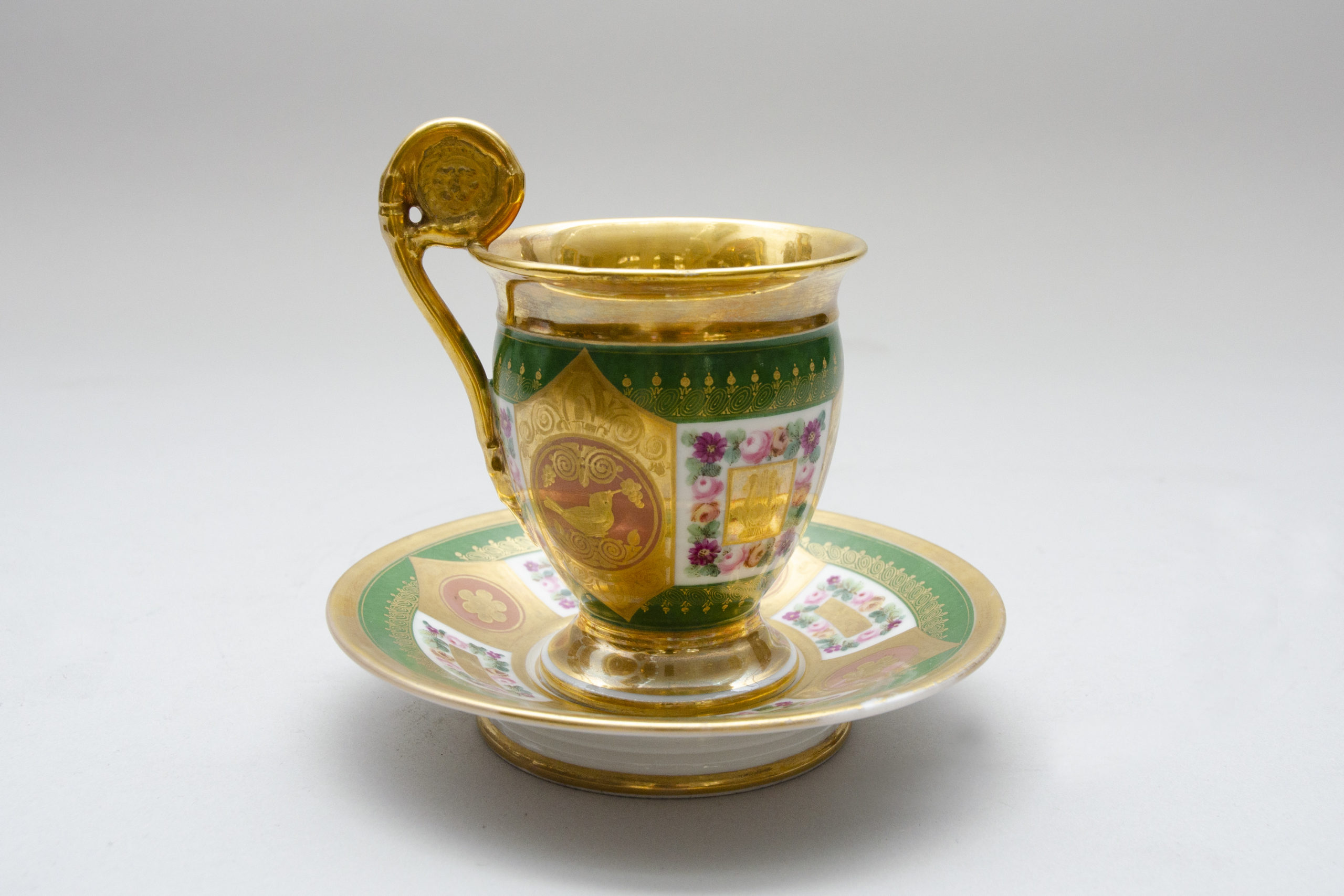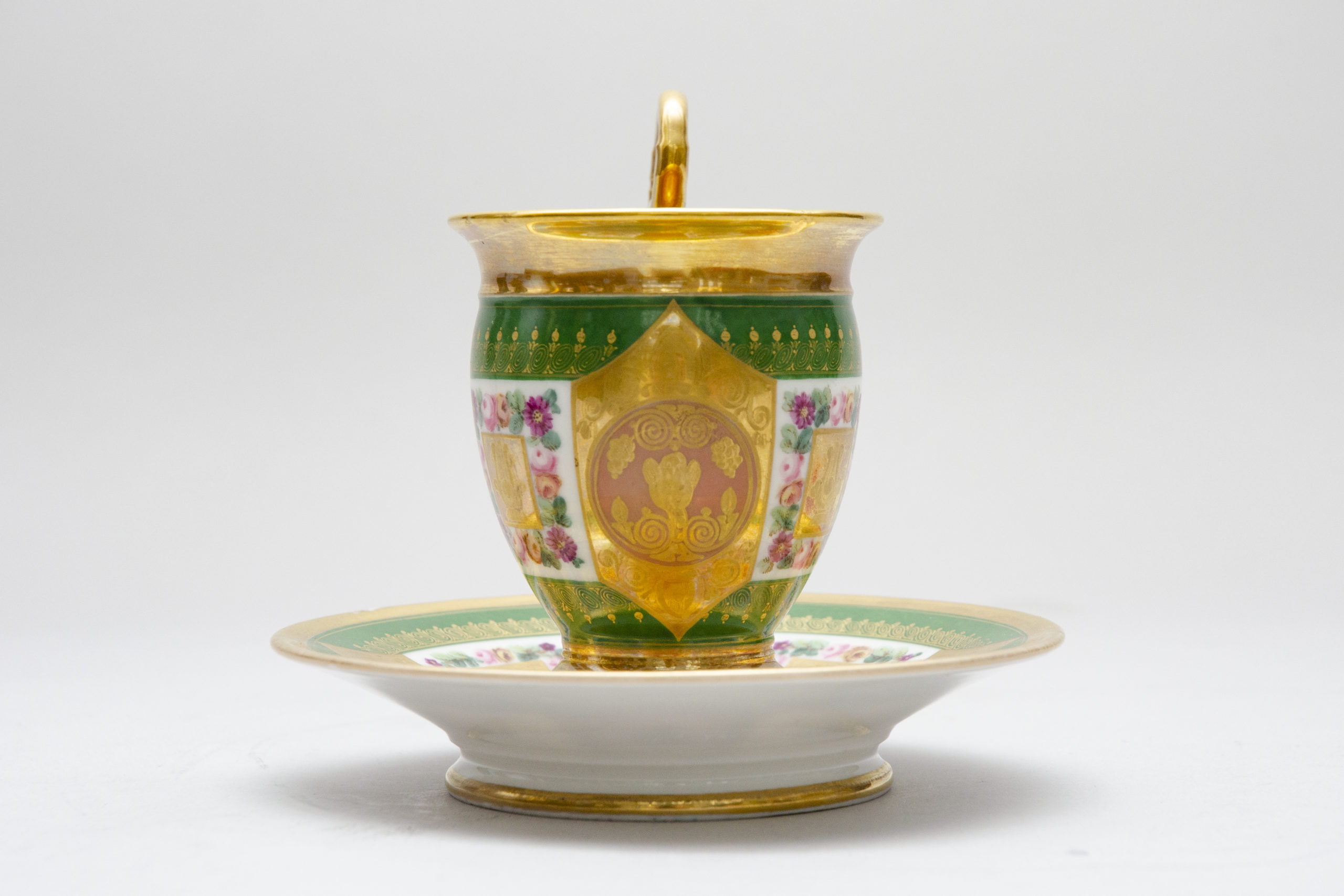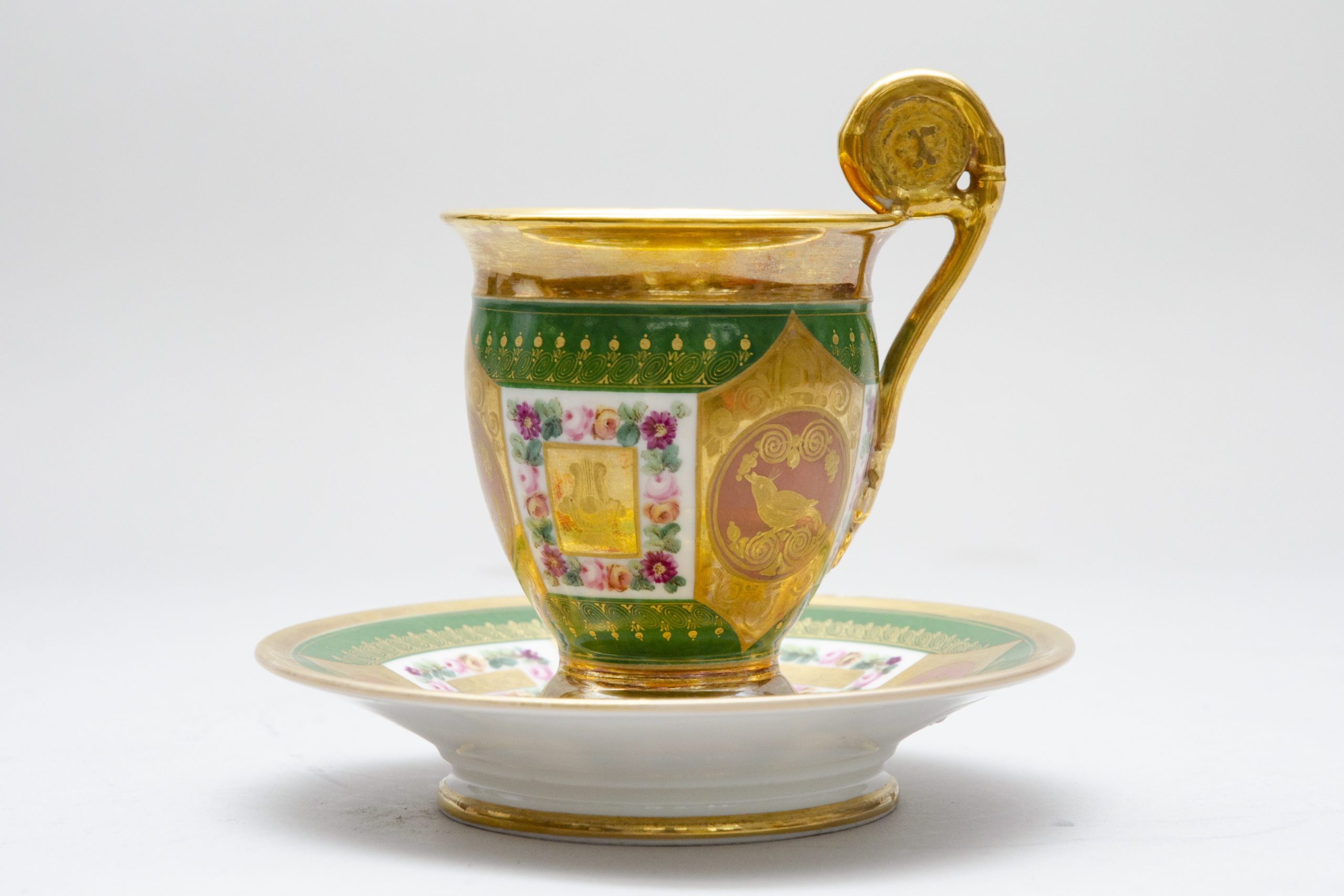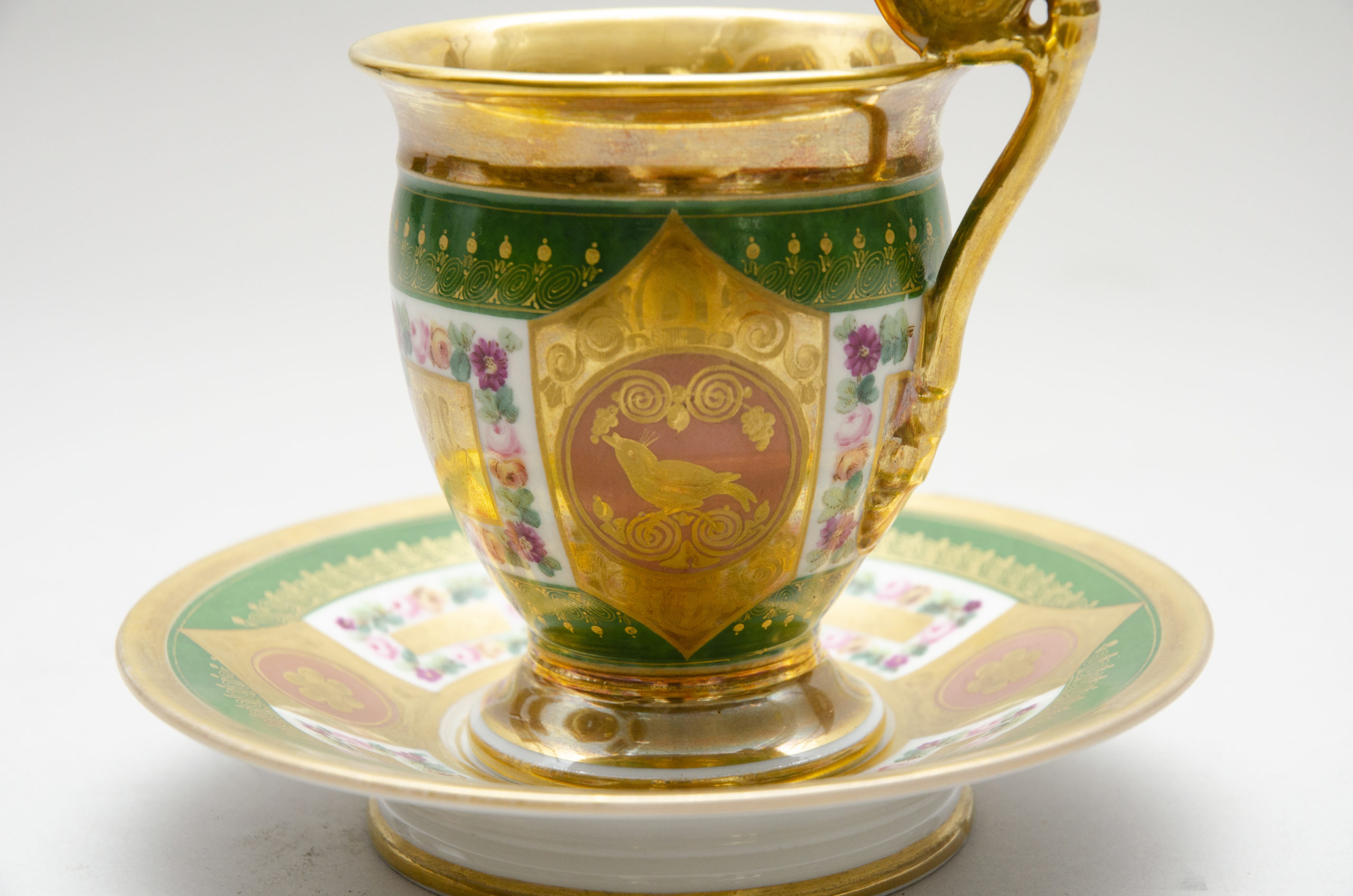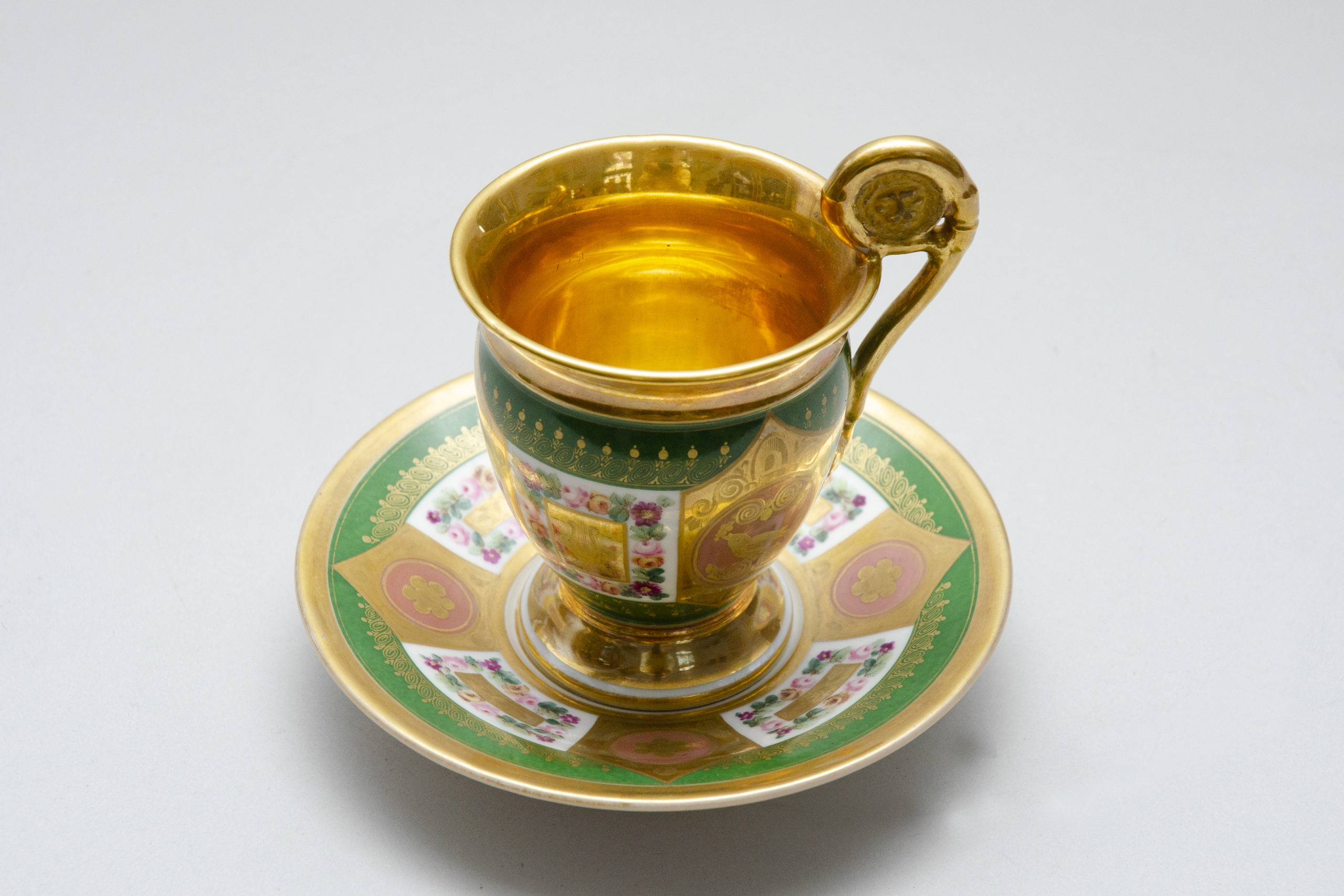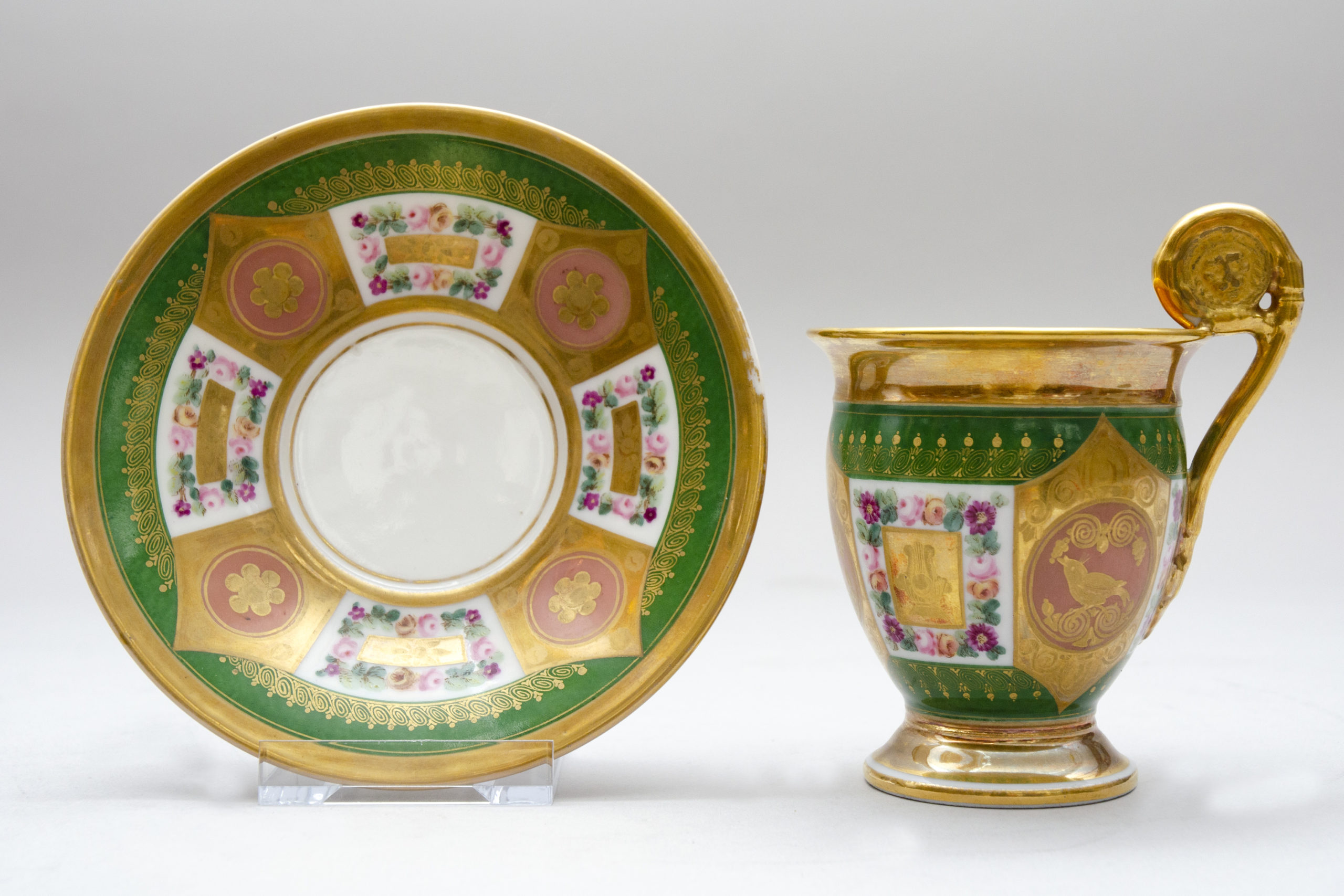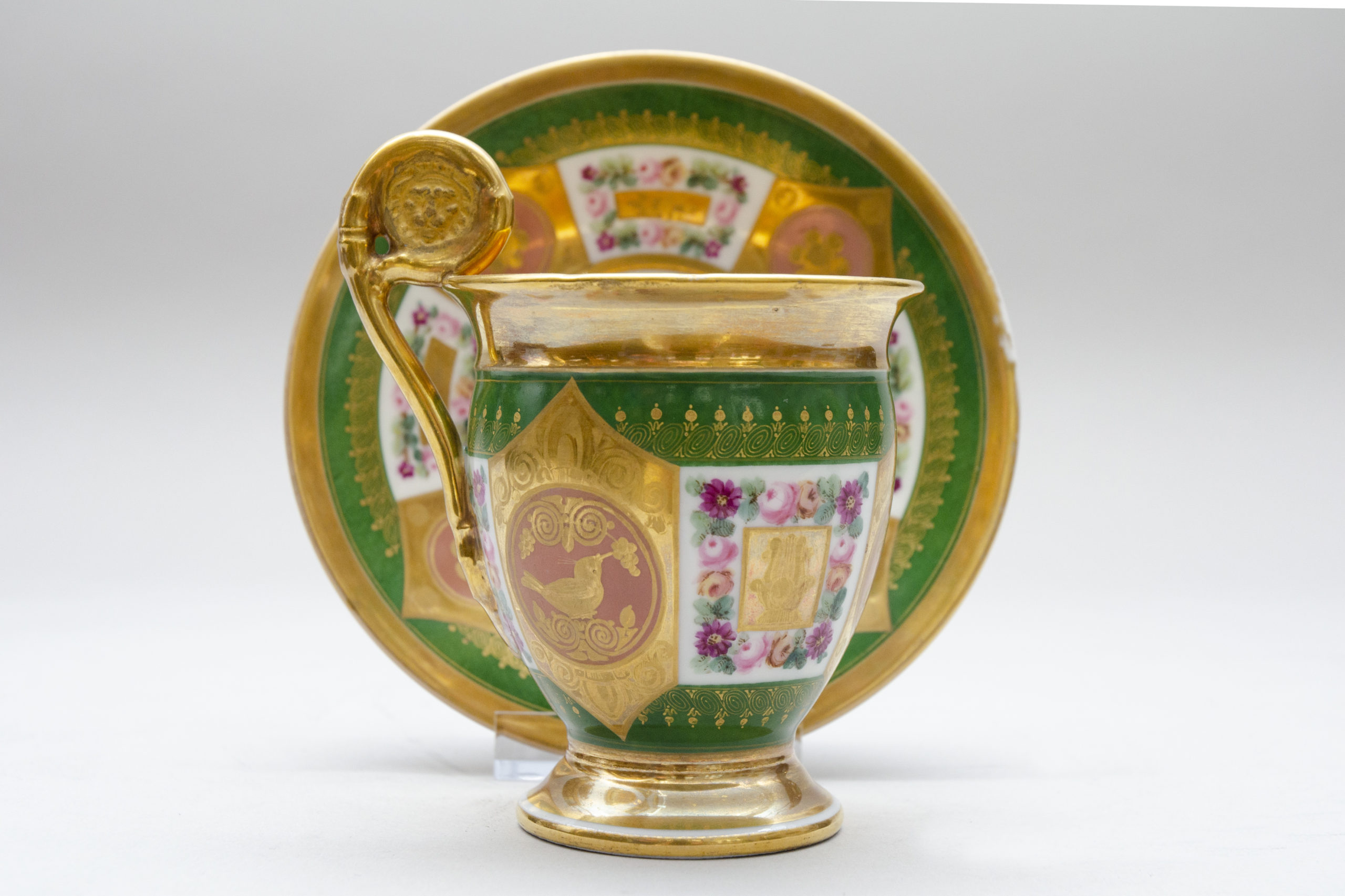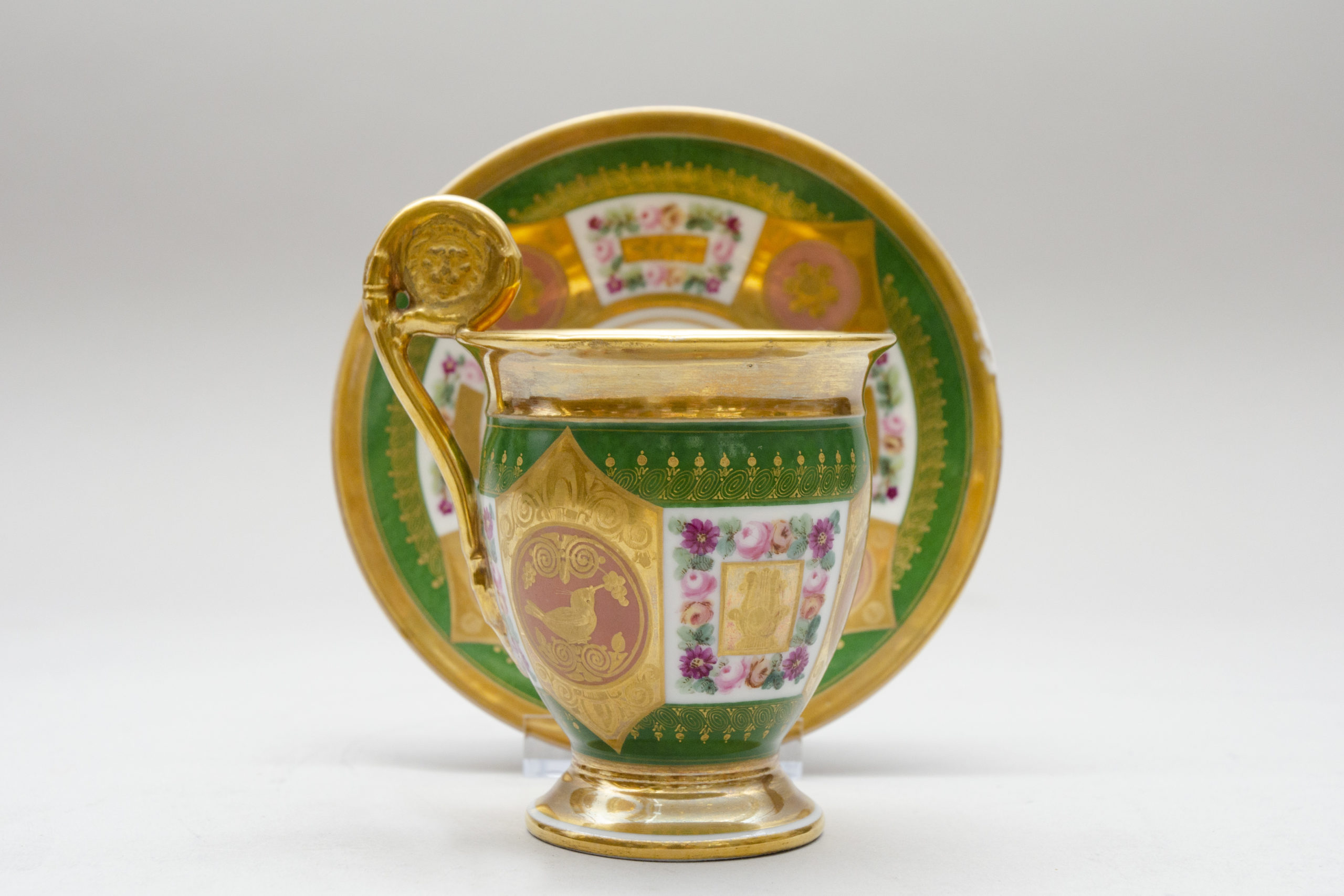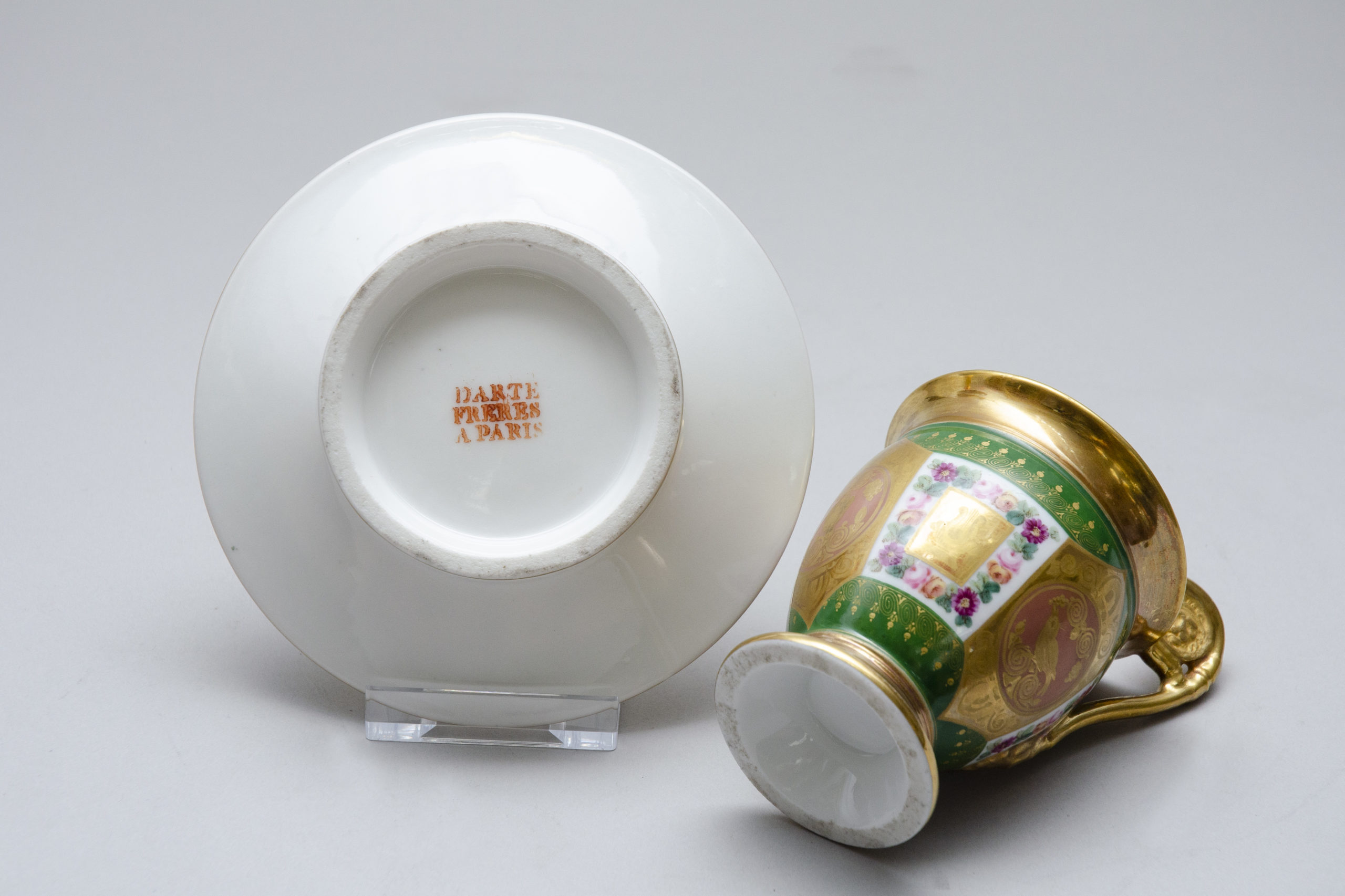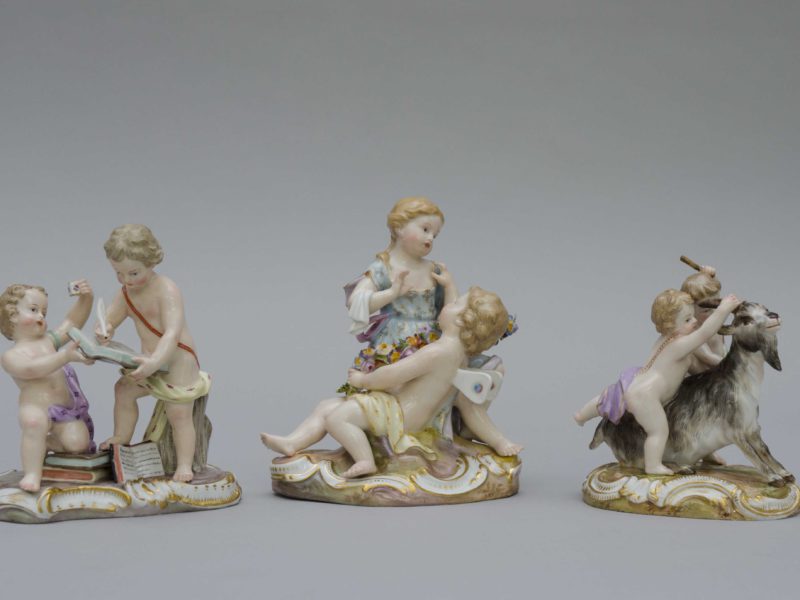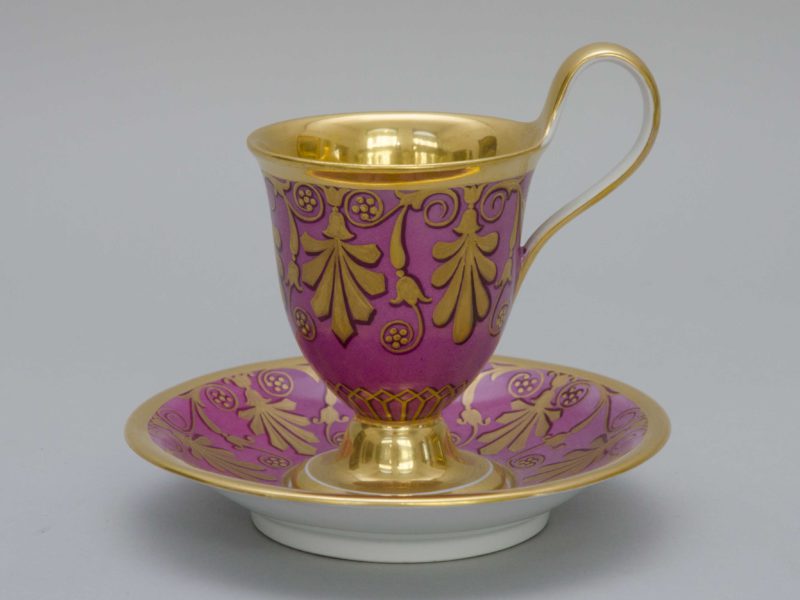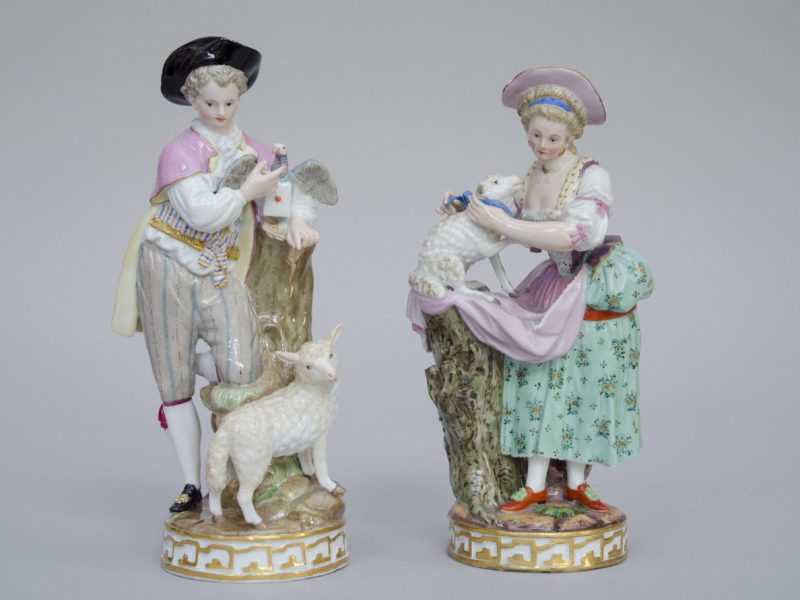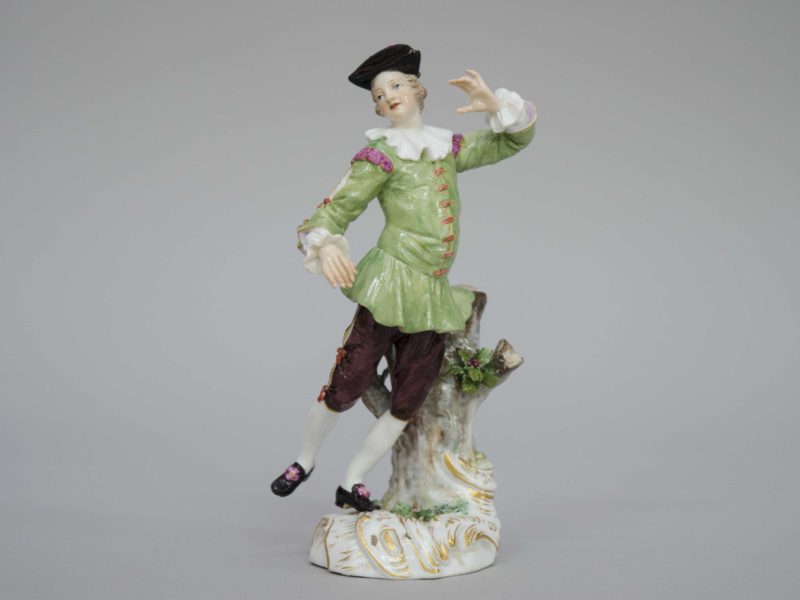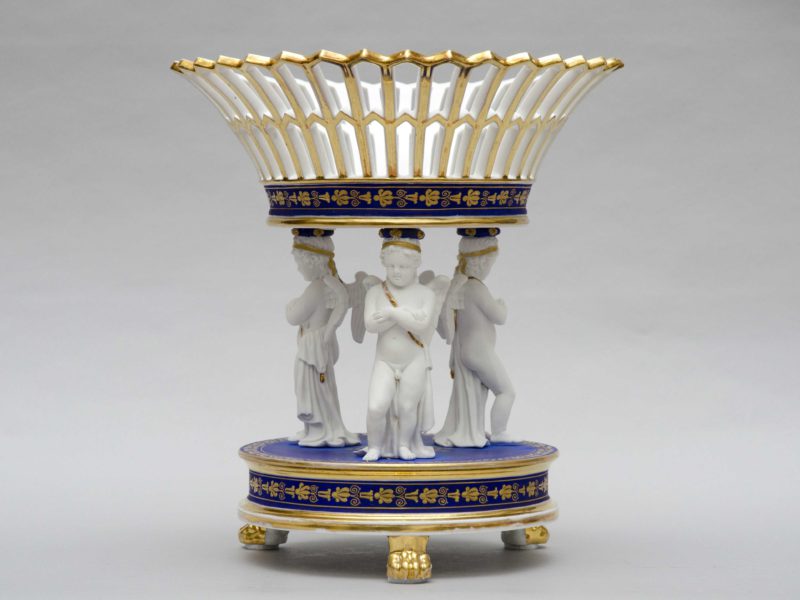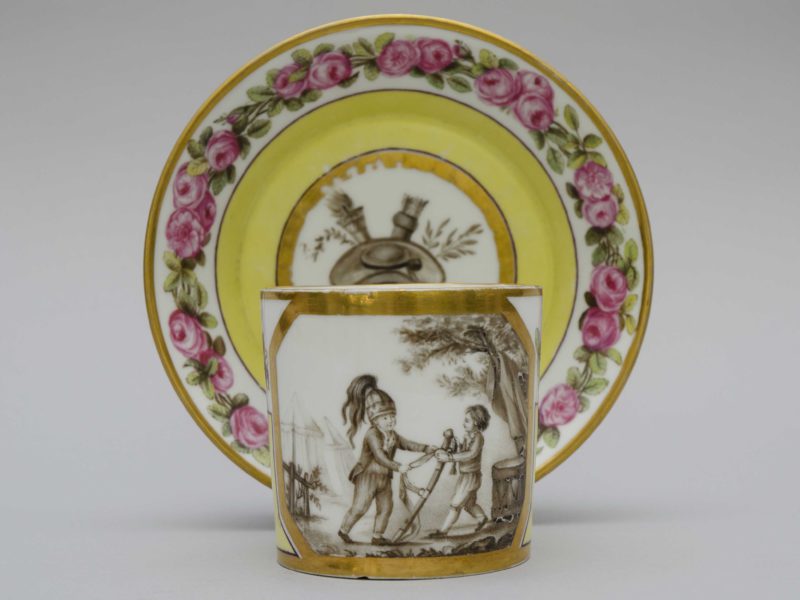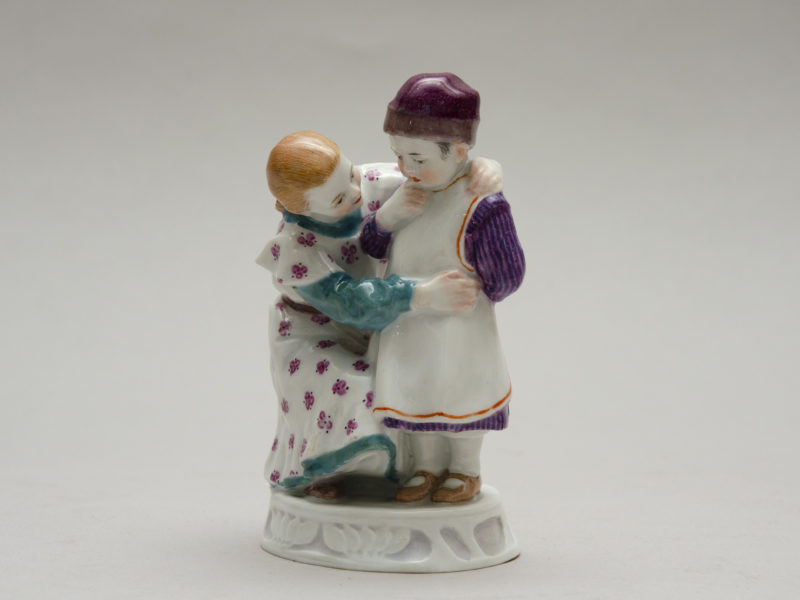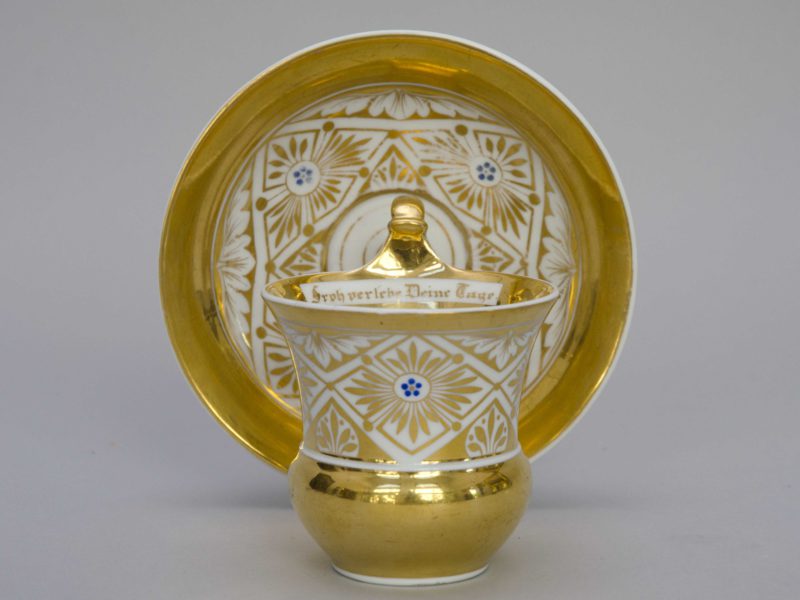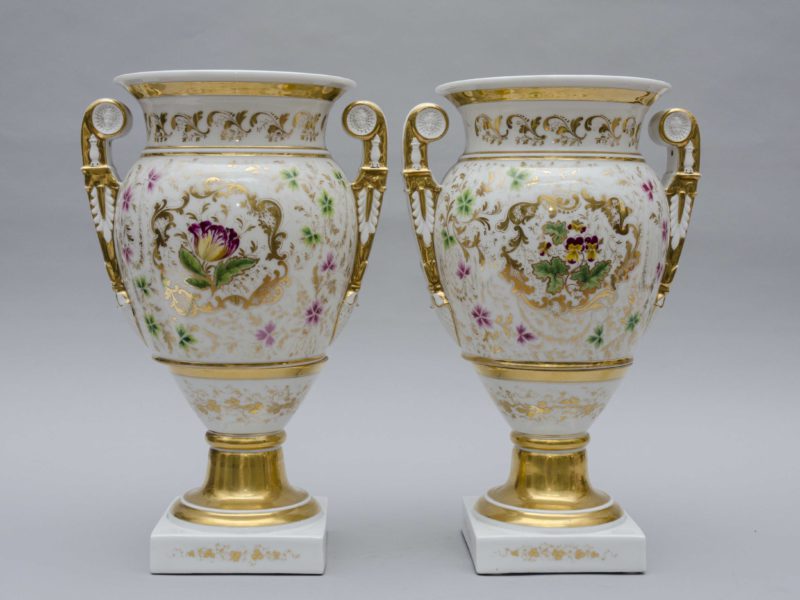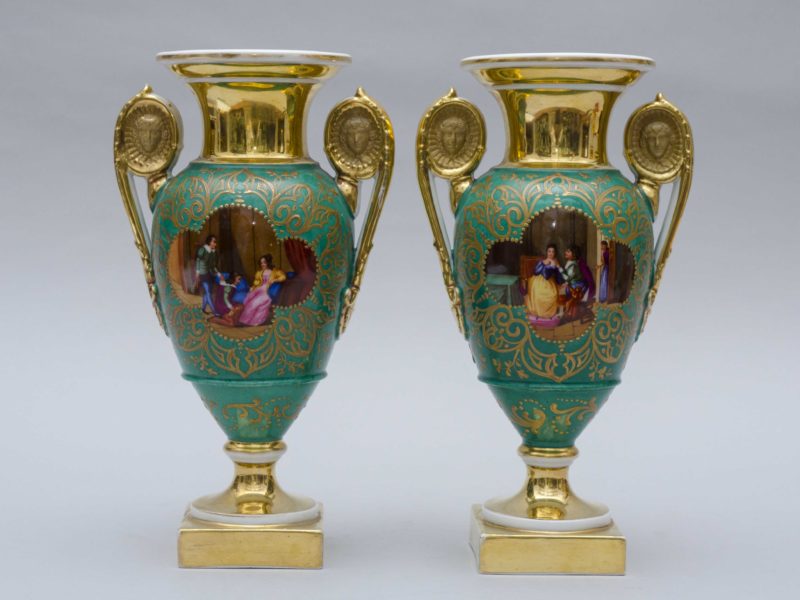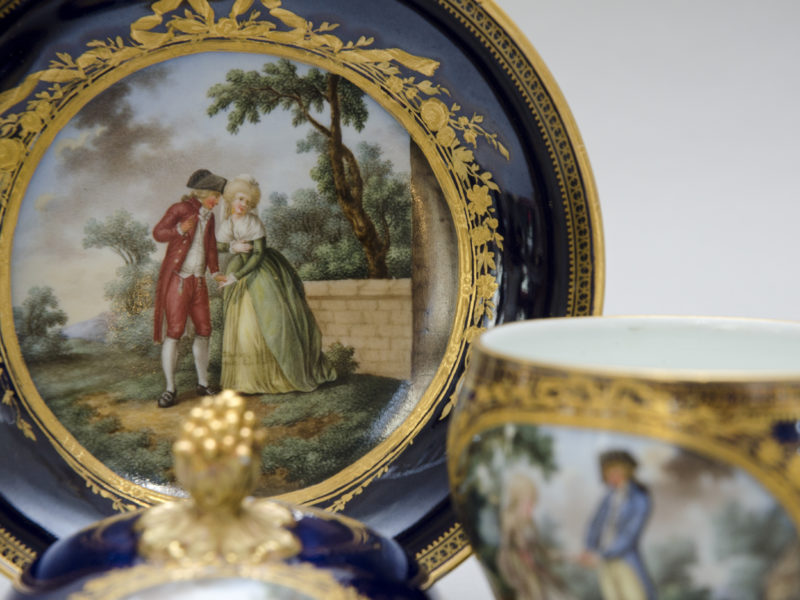
Cup and saucer, Darte frères in Paris
Out of stock
Beautiful round-bodied cup on a piedouche with elevated handle ending in a lion’s mask left in bisque. Intense green ground with beautiful painted flowers, and gold birds on pink ground. The quality of the gold is remarquable. Signed with the rare Darte frères manufactory mark. Great condition.
Size: H 11cm – 9 cm without the handle – diameter of 13,5 cm
Marked in red for the Darte frères manufactory, circa 1804-1829.
Lit: Darte in Paris is one of the prestigious porcelain manufactories of Paris. There were three Darte brothers, Joseph (1765-1832), Louis Joseph (1766-1843) and Jean François (1768-1834). In 1795 they pursued a venture in porcelain and bought a factory in Paris, located at 3 rue de Charonne. The three brothers opened a shop at the Palais Royal, under the direction of Jean François. In 1804, they separated amicably and each carries his part of utensils and porcelains. The brothers Louis Joseph and Jean François found a new company, thus retaining the name of Darte Frères and moved to rue de la Roquette, while Joseph Darte remained under “Darte Ainé in Paris” and moved to rue de Popincourt . This is the only signature of Darte that can be attributed with certainty to the manufacture of the rue de Popincourt.
The brothers prospered (from 80 to 100 workers in peacetime) and an advertisement of 1809 announced that the factory bore the title “Manufacture de porcelaine de S.A.I. Madame Mère de S.M. L’Empereur et Roi”. In 1816, a second shop opened at 16, rue Vienne (the first one at the Palais Royal had already been in operation since 1798). The factory took part in the 1819 exhibition and won a silver medal, as in 1806. However, things got complicated in 1820 and three years later the brothers divided the company’s assets between themselves. In 1824, Louis Joseph joined forces with one of his sons, Auguste Remi, but the business collapsed a year later. In 1828, bankruptcy was declared.
In 20 years, the production of the Darte brothers was important, characterised by rich decorations (often on coloured backgrounds), abundant gold and tasteful paintings, all in vivid and well-glazed colours.
Out of stock
Contact us